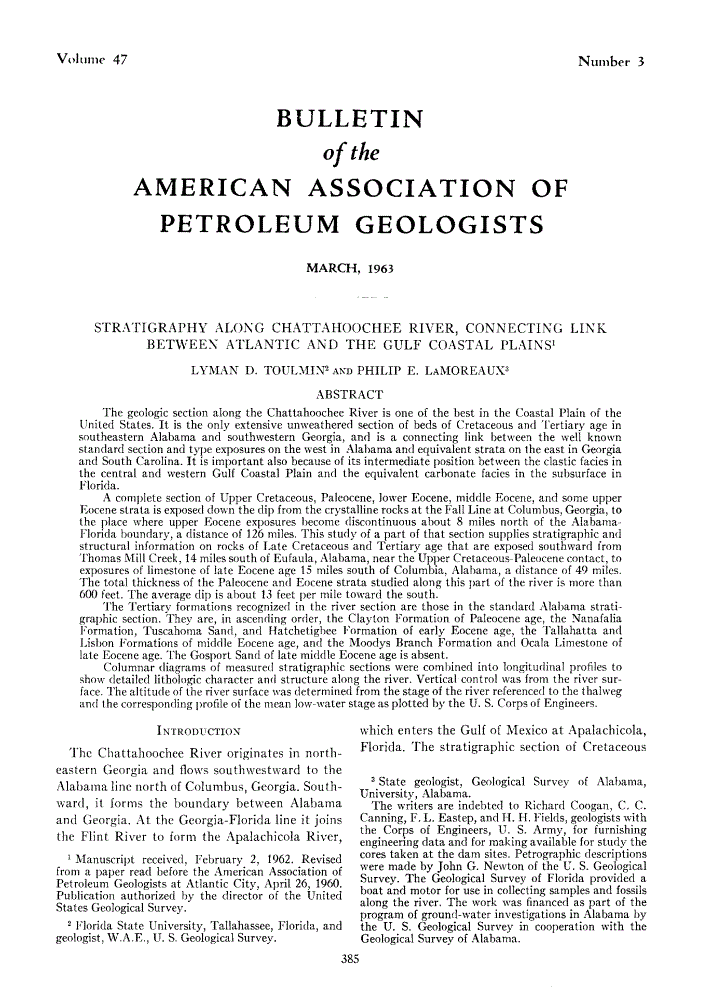ABSTRACT
The geologic section along the Chattahoochee River is one of the best in the Coastal Plain of the United States. It is the only extensive unweathered section of beds of Cretaceous and Tertiary age in southeastern Alabama and southwestern Georgia, and is a connecting link between the well known standard section and type exposures on the west in Alabama and equivalent strata on the east in Georgia and South Carolina. It is important also because of its intermediate position between the clastic facies in the central and western Gulf Coastal Plain and the equivalent carbonate facies in the subsurface in Florida.
A complete section of Upper Cretaceous, Paleocene, lower Eocene, middle Eocene, and some upper Eocene strata is exposed down the dip from the crystalline rocks at the Fall Line at Columbus, Georgia, to the place where upper Eocene exposures become discontinuous about 8 miles north of the Alabama-Florida boundary, a distance of 126 miles. This study of a part of that section supplies stratigraphic and structural information on rocks of Late Cretaceous and Tertiary age that are exposed southward from Thomas Mill Creek, 14 miles south of Eufaula, Alabama, near the Upper Cretaceous-Paleocene contact, to exposures of limestone of late Eocene age 15 miles south of Columbia, Alabama, a distance of 49 miles. The total thickness of the Paleocene and Eocene strata studied along this part of the river is more than 600 feet. The average clip is about 13 feet per mile toward the south.
The Tertiary formations recognized in the river section are those in the standard Alabama stratigraphic section. They are, in ascending order, the Clayton Formation of Paleocene age, the Nanafalia Formation, Tuscahoma Sand, and Hatchetigbee Formation of early Eocene age, the Tallahatta and Lisbon Formations of middle Eocene age, and the Moodys Branch Formation and Ocala Limestone of late Eocene age. The Gosport Sand of late middle Eocene age is absent.
Columnar diagrams of measured stratigraphic sections were combined into longitudinal profiles to show detailed lithologic character and structure along the river. Vertical control was from the river surface. The altitude of the river surface was determined from the stage of the river referenced to the thalweg and the corresponding profile of the mean low-water stage as plotted by the U. S. Corps of Engineers.





